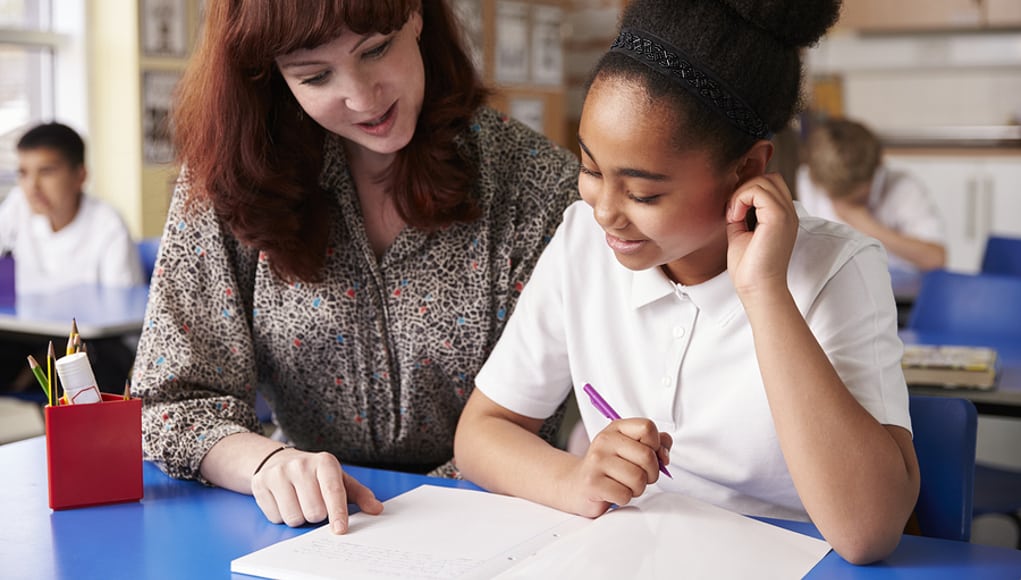6 Steps to Ensuring ILPs Better Support Inclusive Personalized Learning

By Ace Parsi and Curtis Richards
From pulling our kids out of bed in the morning for school to devising the right carrots and sticks to inspire their effort in the classroom, education often becomes something we drag kids through rather than inspire them to enjoy. We shouldn’t be surprised then at the pervasive state of disengagement in our schools, or that when many kids finally have the agency to make the decision for themselves, they drop out of school altogether. This reality is not the failure of the student, but a failure of the adults and the system. It’s a failure that can only be rectified when we begin to think about education not as something we put into students, as if we’re filling a gas tank, but something we ignite within them.
Individualized learning plans (ILPs) are a key instrument to achieving this goal. ILPs are being used as a strategy in more than 40 states to enable students to document their course-taking patterns and post-secondary plans and ensure these plans are aligned to their career goals. In essence, ILPs document college and career readiness plans and skills for middle and high school students.
If done well, the process of developing an individualized learning plan can bring together a student and their counselors, educators, and family to more fully understand the student and their short- and long-term goals and converge on the experiences necessary to achieve those goals. Research shows that when implemented well, ILPs can lead to stronger academic goal-setting, self-efficacy, and motivation. Families play a critical role in the success of ILPs and often report that sitting down with their student to develop her ILP is the first real adult conversation they have had with their child.
Yet efforts to ensure ILPs meaningfully deliver on equity and inclusion may often be derailed by overlooking the needs of different students. It might occur in the failure to address physical accessibility of different learning opportunities outlined in the ILP. Or it may be a failure to check adult biases about what a student with a disability or a student facing an educational challenge can know and do and how it is reflected in their ILP.
What’s most unfortunate is that when we fail to address inaccessibility or bias in implementing ILPs, we are failing the very students who could stand to benefit most from the effective ILP implementation. Students with disabilities often will inevitably leave K-12 education–a place where the majority of choices are made for them by educators or parents–and enter postsecondary settings and the workforce where they will need to be more proactive in making decisions. Preparing students to make this transition successfully doesn’t require that we modify our expectations for students with disabilities, but that we provide accommodations and opportunities for students to make active, informed choices about their learning and lives.
Several key actions can ensure we maximize the potential of ILPs for students with disabilities. These include:
- Expand stakeholders understanding of a disability. If we can share accurate information and overcome unfounded biases about disabilities and students’ capacities, we can remove policy and practice barriers and better support students in achieving their goals.
- Be explicit in helping students develop key skills in the ILP process. It’s important to recognize that students don’t come into an ILP process as blank slates—they often have been influenced by biases and received messages that may hinder their confidence and ability to fully engage in their ILP. Students will likely need explicit instruction and skill building in the areas of self-advocacy and self-determination to more effectively participate in the ILP development process (to learn more read NCLD’s new report, Agents of Their Own Success).
- Ensure the system is accessible so that students have meaningful choices. ILPs are only as good as the accessible learning environments they’re built around. If learning experiences are not accessible, it doesn’t matter how ambitious or inclusive the ILP itself is because a student will not have the opportunity to meaningfully engage.
- Ensure students are part of any conversations affecting them. ILPs should not be an intervention that’s done to students. Instead, students should be engaged in and should drive the process, whether they have a disability or not.
- Value the goals that students choose for themselves. If an ILP is to be meaningful, we must affirm the goals that students set for themselves, whether they have a disability or not. The process that leads to the development of the ILP should broaden, not narrow, students’ prospects.
- ILPs need to be complementary to a student’s Individual Education Program (IEP), and vice versa. The ILP establishes the goals and documents progress toward those goals, while the IEP reflects the same goals and documents the supports and services necessary for the student to achieve those goals.
By taking these steps, we can ensure the process leading to the development of a quality ILP is a meaningful learning experience for students, educators, counselors, and students’ families, rather than a bureaucratic compliance exercise. And, in the process, we can ensure learning is something we ignite within students rather than something we drag them through.
For more, see:
- Why True Equity in Learning Depends on Proactive, not Reactive, Design
- PBL for Equity & Inclusion of Students with Disabilities
- UDL: A Guiding Framework for a Personalized Learning Equity and Inclusion
Ace Parsi is the Personalized Learning Partnership Manager at the National Center for Learning Disabilities (NCLD). Connect with them on Twitter @ncldorg.
Curtis Richards is Director of the Center for Workforce Development at the Institute for Educational Leadership. Connect with them on Twitter @IELconnects.
Stay in-the-know with all things EdTech and innovations in learning by signing up to receive our weekly newsletter, Smart Update.


0 Comments
Leave a Comment
Your email address will not be published. All fields are required.